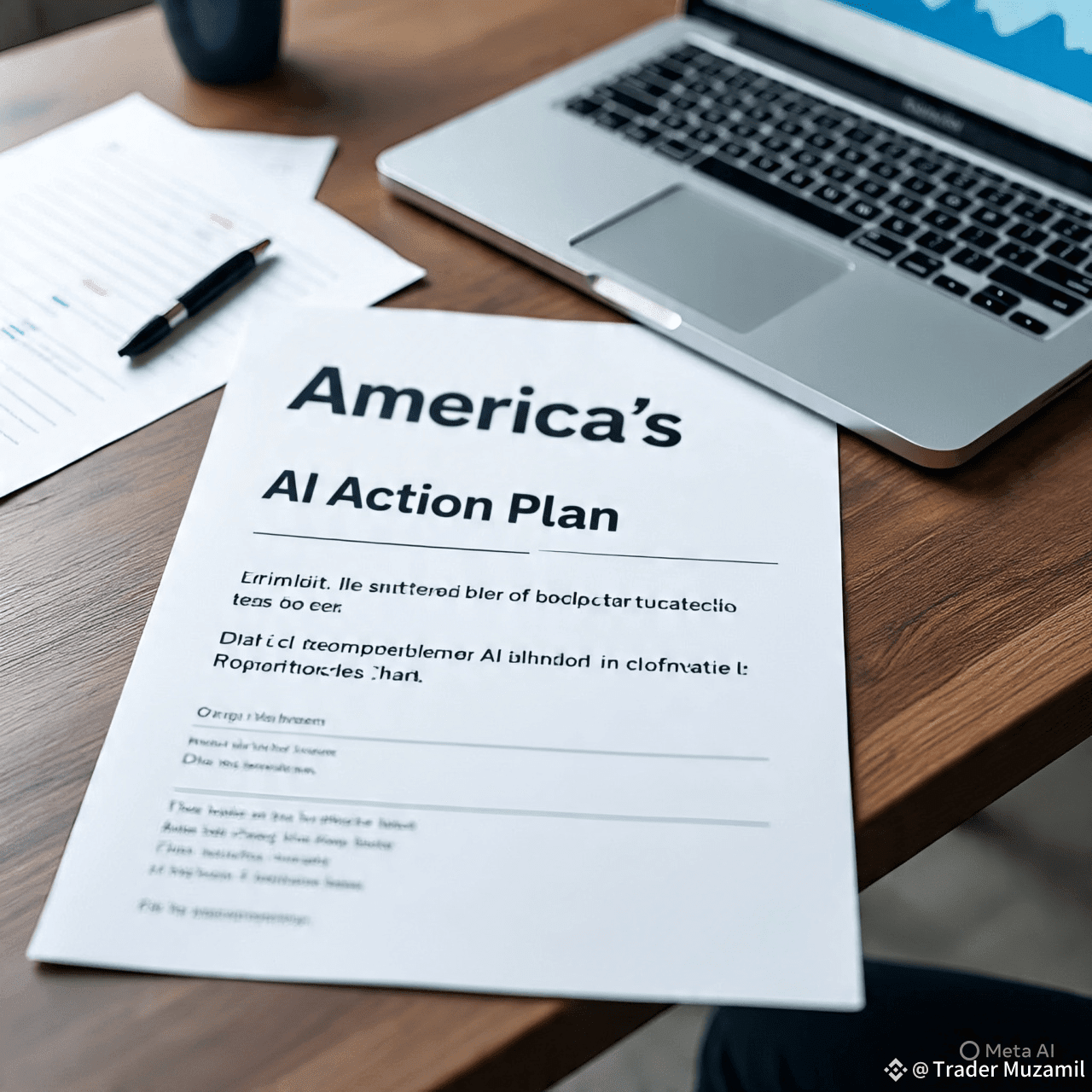The White House unveiled the 28-page policy framework titled "Winning the Race: America’s AI Action Plan", fulfilling Executive Order 14179 ("Removing Barriers to American Leadership in Artificial Intelligence") from January 2025 . It identifies ~90 federal actions across three pillars:
1. Accelerating AI innovation
2. Building AI infrastructure (data centers, semiconductors, permitting reforms)
3. Leading in international AI diplomacy and security
---
🔗 Crypto-AI Connections: What It Means
1. Expanded infrastructure = cheaper compute for blockchains
Fast‑tracking data centers and semiconductor plants translates into lower costs for blockchain operation and zk‑rollup networks. It’s akin to a “quantitative easing” for compute, helping Ethereum Layer-2, decentralized finance, and AI‑powered smart contracts .
2. RWA + AI + blockchain convergence
The plan’s push for AI exports and global infrastructure can accelerate tokenization of real‑world assets (RWA), where AI efficiency meets blockchain transparency—potentially standardizing digital settlement layers .
3. Transparent AI development aligns with Web3 ethos
Federal procurement policies requiring AI systems to be objective and free from ideological bias sync well with the crypto industry’s "code as law" philosophy and interest in AI auditing and traceability .
---
🏛️ Policy & Regulatory Moves in Crypto
David O. Sacks was appointed White House AI & Crypto Czar: leading crypto legal framework creation and policy coordination at the intersection of both domains .
A Strategic Bitcoin Reserve and Digital Asset Stockpile are in development—proposals include Treasury holding forfeited Bitcoin, signaling a crypto‑friendly posture by the government .
The recently enacted GENIUS Act (signed July 18, 2025) establishes federal regulation for stablecoins: one‑to‑one asset backing, audit requirements, and a dual oversight system between federal and state authorities .
Congressional progress continues with the Digital Asset Market Clarity Act 2025, aimed at defining roles for the SEC vs. CFTC and increasing market transparency .
Treasury Secretary Scott Bessent has explicitly framed crypto as a strategic asset and growth engine for U.S. economic policy and dollar supremacy .
---
📊 Market & Industry Implications
AI infrastructure expansion should reduce operating costs for blockchain services, potentially benefiting Layer 2 networks, AI‑analytics projects, and interoperability protocols.
Stablecoin clarity under GENIUS Act may boost regulatory confidence, potentially increasing adoption and institutional interest—especially for dollar‑backed tokens.
Greater alignment between AI and crypto frameworks—such as demand for transparent, unbiased systems—could lead to new hybrid models that blend blockchain verifiability with AI services.
Political and environmental rollback (e.g., NEPA, Clean Water Act exemptions) may fast‑track infrastructure builds—but could draw legal and public opposition that ripple into crypto data center siting and operations .
---
✅ Summary Table
Area Key Impact
AI infrastructure buildout Lower compute costs → benefit blockchain networks & zk‑rollups
Stablecoin legislation Regulatory clarity under GENIUS Act → improved confidence and adoption
Government crypto reserve Signals official recognition and adoption of digital assets
AI + crypto convergence Shared principles on transparency, objectivity, and open standards
Fast‑track permitting Opportunities for infrastructure development—but also environmental risk
---
⚠️ Risks & Considerations
The deregulatory stance may trigger environmental lawsuits and public protests around data center permits and infrastructure projects .
The plan’s push to punish or withhold funding from states with "burdensome" AI regulation may create patchwork legal conflicts between state-level crypto/AI laws and federal policy .
Ethical and safety oversight remains limited in the plan—deepfake, bias, and misinformation risks are not addressed with the same rigor as in prior Biden-era policies .
---
In short: America’s AI Action Plan signals a new era of crypto‑friendly infrastructure, regulatory clarity for stablecoins, and ideological alignment between AI governance and blockchain transparency. Though it raises economic and innovation prospects for crypto, it also brings potential environmental and governance challenges.




